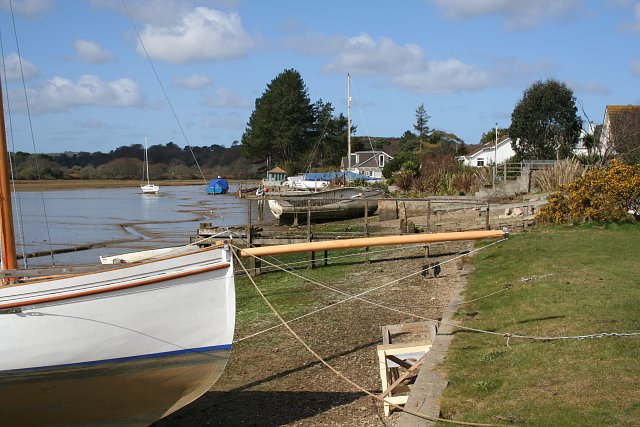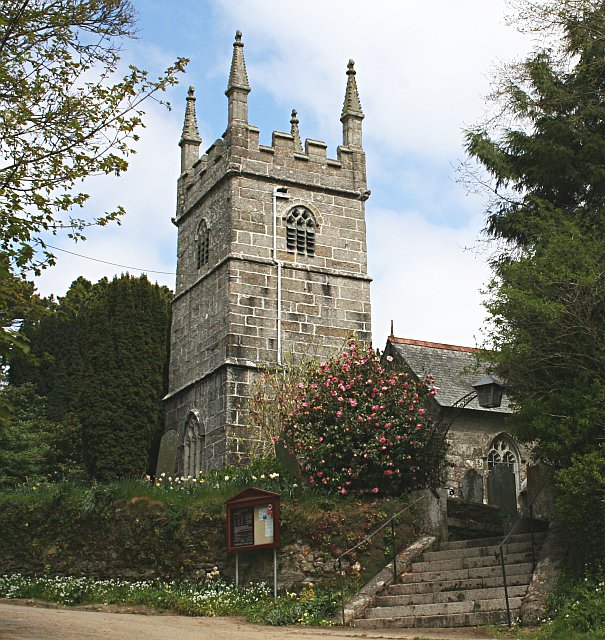|
Carnon Mine
Carnon Mine was a tin mine at Restronguet Creek, near the village of Devoran in Cornwall, England. A ruined engine house survives on the north bank of the creek. It is a Grade II listed building. History The tin mine opened in 1824. The surviving engine house is thought to have housed an engine of cylinder diameter 24 inches. An artificial island was created in the estuary; shafts, in the form of cast iron cylinders made at Perran Foundry, were sunk there, and a 14-inch engine and horse whim erected. Water was pumped from the mine by the engine on the estuary bank via flatrods."Carnon Mine" ''Explore Cornwall''. Retrieved 28 August 2020. The mine was profitable, but closed in 1830; the |
Devoran
Devoran ( kw, Deveryon) is a village in south Cornwall, England, United Kingdom. It is southwest of Truro at .Ordnance Survey: Landranger map sheet 204 ''Truro & Falmouth'' Formerly an ecclesiastical parish, Devoran is now in the civil parish of Feock (where the 2011 census population is included). The village is on the northeast bank of the Carnon River at its confluence with Restronguet Creek, a tidal creek which flows into Carrick Roads above Falmouth. Devoran is at the Normal Tidal Limit (NTL) of the creek but until the 20th-century the tidal limit stretched much further up the valley than now.Cornwall Industrial Settlements Initiative; Devoran PDF. Retrieved 8 April 2016 The name ''Devoran'' comes from the [...More Info...] [...Related Items...] OR: [Wikipedia] [Google] [Baidu] |
Cornwall
Cornwall (; kw, Kernow ) is a historic county and ceremonial county in South West England. It is recognised as one of the Celtic nations, and is the homeland of the Cornish people. Cornwall is bordered to the north and west by the Atlantic Ocean, to the south by the English Channel, and to the east by the county of Devon, with the River Tamar forming the border between them. Cornwall forms the westernmost part of the South West Peninsula of the island of Great Britain. The southwesternmost point is Land's End and the southernmost Lizard Point. Cornwall has a population of and an area of . The county has been administered since 2009 by the unitary authority, Cornwall Council. The ceremonial county of Cornwall also includes the Isles of Scilly, which are administered separately. The administrative centre of Cornwall is Truro, its only city. Cornwall was formerly a Brythonic kingdom and subsequently a royal duchy. It is the cultural and ethnic origin of the Cor ... [...More Info...] [...Related Items...] OR: [Wikipedia] [Google] [Baidu] |
Restronguet Creek
Restronguet Creek is a tidal ria in south Cornwall, United Kingdom. It is a tributary of Carrick Roads, the estuary of the River Fal, and is situated approximately four miles (6.5 km) south of Truro and three miles (5 km) north of Falmouth. Ordnance Survey: Landranger map sheet 204 ''Truro & Falmouth'' The creek is approximately two miles (3 km) long from its Normal Tidal Limit (NTL) to its mouth and half-a-mile (800 metres) across at its widest point. It discharges into Carrick Roads at Restronguet Point through a narrow channel known locally as 'the gut'. Restronguet Creek Society website. Retrieved May 2010 Restronguet Creek forms the boundary between the es of [...More Info...] [...Related Items...] OR: [Wikipedia] [Google] [Baidu] |
Listed Building
In the United Kingdom, a listed building or listed structure is one that has been placed on one of the four statutory lists maintained by Historic England in England, Historic Environment Scotland in Scotland, in Wales, and the Northern Ireland Environment Agency in Northern Ireland. The term has also been used in the Republic of Ireland, where buildings are protected under the Planning and Development Act 2000. The statutory term in Ireland is "protected structure". A listed building may not be demolished, extended, or altered without special permission from the local planning authority, which typically consults the relevant central government agency, particularly for significant alterations to the more notable listed buildings. In England and Wales, a national amenity society must be notified of any work to a listed building which involves any element of demolition. Exemption from secular listed building control is provided for some buildings in current use for worsh ... [...More Info...] [...Related Items...] OR: [Wikipedia] [Google] [Baidu] |
Perran Foundry
Perranarworthal ( kw, Peran ar Wodhel) is a civil parish and village in Cornwall, England, United Kingdom. The village is about four miles (6.5 km) northwest of Falmouth and five miles (8 km) southwest of Truro. Perranarworthal parish is bordered on the north by Kea parish, on the east by Restronguet Creek and Mylor parish, on the south by St Gluvias and Stithians parishes and on the west by Gwennap parish. The parish population at the 2011 census was 1,496. The name derives from the Manor of Arworthal which has had a number of spellings in the past including Hareworthal (1187), Arwoethel and Arwythel. By the 18th-century two names appear on maps "Perran Arworthal" meaning St Piran's by the creek or estuary. William Penaluna described the settlement in 1838. Perranwell railway station is on the Maritime Line. Perran Wharf is the area of the parish beside the River Kennall (a tributary of Restronguet Creek) where there were wharves and a quay. This is current ... [...More Info...] [...Related Items...] OR: [Wikipedia] [Google] [Baidu] |
Whim (mining)
A whim, also called a whim gin or a horse capstan, is a device similar to a windlass which is used in mining for hauling materials to the surface. It comprises a capstan or a wide drum with a vertical axle. A rope is wound around the drum, with both ends traversing several pulleys and hanging down the mine shaft. As the drum is turned around, one end of the rope is lowered, carrying an empty bucket, while the other one is raised, carrying a full load. The major benefit of a whim is that its operation can be performed at a distance from the shaft, thus resolving some of the congestion. Early whims were horse-powered, but later they were powered by waterwheels or steam engines, including the most advanced Cornish engines. Whims were used in coal mines until the end of the nineteenth century. Horse whims were also used to power team boats. The gin wheel at Nottingham Industrial Museum dating from 1844, is a wooden drum, set on a vertical pole within a wooden frame, with a horizont ... [...More Info...] [...Related Items...] OR: [Wikipedia] [Google] [Baidu] |
Flatrod System
{{Short description, Invention The flatrod system (german: italic=yes, Kunstgestänge, Stangenkunst, Stangenwerk, or ''Stangenleitung''; sv, italic=yes, Konstgång or ''Stånggång'') was an invention of the mining industry that enabled the mechanical movement generated by a water wheel (German: ''Kunstrad'') to be transferred over short distances.''Bergmännisches Wörterbuch.'' Bey Johann Christoph Stößel, Chemnitz 1778 It was invented in the 16th century and by the 18th century was being used to transmit power up to four kilometres. Flatrod systems were widely used in the Harz and Ore Mountains of Germany as well as in Cornwall, England and Bergslagen in Sweden. A replica of a flatrod system may be seen in Bad Kösen in Germany on the River Saale and there is a replica water wheel, used to drive flatrods, in Clausthal-Zellerfeld in the Upper Harz, formerly the biggest mining region in Europe. Fundamentals The flatrod system dates to the period before the invention of th ... [...More Info...] [...Related Items...] OR: [Wikipedia] [Google] [Baidu] |
Redruth And Chasewater Railway
The Redruth and Chasewater Railway, (otherwise called the ''Redruth and Chacewater Railway'' using modern spelling), was an early mineral railway line in Cornwall, England, UK. It opened in 1825 and was built to convey the output from copper mines in the Gwennap area to wharves on Restronguet Creek (off the Fal Estuary) around Devoran, and to bring in coal to fuel mine engines; later it carried timber for pit props and also house coal. A little over long, it was built to a narrow gauge and used horse traction at first, later using steam locomotives. Solely dependent on the economy of the mines it served, it prospered when they did, and when they declined, the railway declined too; it finally closed in 1915. It never carried passengers. Much of its route can still be traced, and part of it forms the course of the Redruth and Chasewater Railway Trail, an outdoor leisure facility. History Antecedents Prior to the nineteenth century, much mineral extraction had taken place in ... [...More Info...] [...Related Items...] OR: [Wikipedia] [Google] [Baidu] |
Beam Engine
A beam engine is a type of steam engine where a pivoted overhead beam is used to apply the force from a vertical piston to a vertical connecting rod. This configuration, with the engine directly driving a pump, was first used by Thomas Newcomen around 1705 to remove water from mines in Cornwall. The efficiency of the engines was improved by engineers including James Watt, who added a separate condenser; Jonathan Hornblower and Arthur Woolf, who compounded the cylinders; and William McNaught, who devised a method of compounding an existing engine. Beam engines were first used to pump water out of mines or into canals but could be used to pump water to supplement the flow for a waterwheel powering a mill. The rotative beam engine is a later design of beam engine where the connecting rod drives a flywheel by means of a crank (or, historically, by means of a sun and planet gear). These beam engines could be used to directly power the line-shafting in a mill. They als ... [...More Info...] [...Related Items...] OR: [Wikipedia] [Google] [Baidu] |
Mining In Cornwall And Devon
Mining in Cornwall and Devon, in the South West England, southwest of England, began in the early Bronze Age, around 2150 BC. Tin, and later copper, were the most commonly extracted metals. Some tin mining continued long after the mining of other metals had become unprofitable, but ended in the late 20th century. In 2021, it was announced that a new mine was extracting Lithium-ion battery, battery-grade lithium carbonate, more than 20 years after the closure of the last South Crofty tin mine in Cornwall in 1998. Historically, tin and copper as well as a few other metals (e.g. arsenic, silver, and zinc) have been mined in Cornwall and Devon. Tin deposits still exist in Cornwall, and there has been talk of reopening the South Crofty tin mine. In addition, work has begun on re-opening the Drakelands Mine, Hemerdon tungsten and tin mine in south-west Devon. In view of the economic importance of mines and quarries, geological studies have been conducted; about forty distinct minera ... [...More Info...] [...Related Items...] OR: [Wikipedia] [Google] [Baidu] |
Tin Mines In Cornwall
Tin is a chemical element with the symbol Sn (from la, stannum) and atomic number 50. Tin is a silvery-coloured metal. Tin is soft enough to be cut with little force and a bar of tin can be bent by hand with little effort. When bent, the so-called "tin cry" can be heard as a result of twinning in tin crystals; this trait is shared by indium, cadmium, zinc, and mercury in the solid state. Pure tin after solidifying presents a mirror-like appearance similar to most metals. In most tin alloys (such as pewter) the metal solidifies with a dull gray color. Tin is a post-transition metal in group 14 of the periodic table of elements. It is obtained chiefly from the mineral cassiterite, which contains stannic oxide, . Tin shows a chemical similarity to both of its neighbors in group 14, germanium and lead, and has two main oxidation states, +2 and the slightly more stable +4. Tin is the 49th most abundant element on Earth and has, with 10 stable isotopes, the largest n ... [...More Info...] [...Related Items...] OR: [Wikipedia] [Google] [Baidu] |




.jpg)




